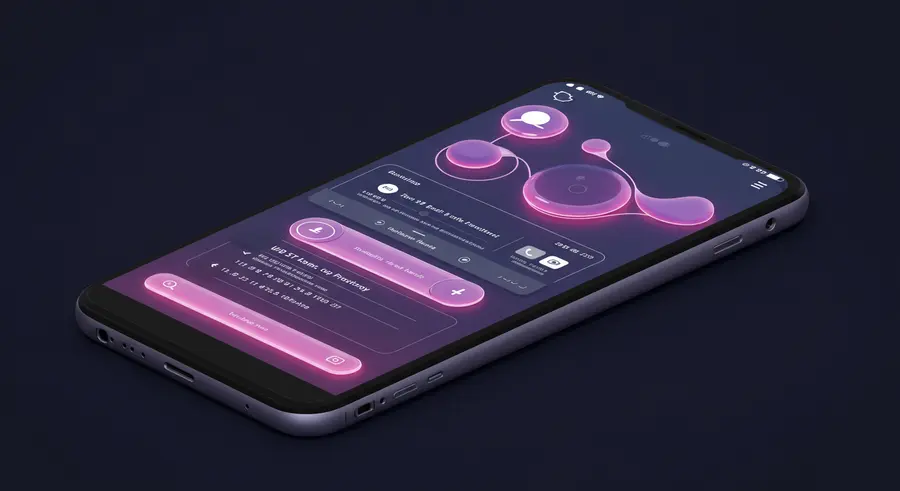Appearance

Welcome, tech innovators! 👋 Today, we're diving deep into an exciting frontier where two powerful technologies converge: Progressive Web Apps (PWAs) and Artificial Intelligence (AI). Individually, they've reshaped the digital landscape. But together, they're paving the way for truly intelligent, seamless, and personalized web experiences.
In this article, we'll explore how PWAs and AI are not just coexisting but are synergistically evolving, creating a new paradigm for web development. For a foundational understanding of PWAs, you can explore our previous article: The Power of Progressive Web Apps (PWAs).
🚀 The PWA Revolution: A Quick Recap
Before we delve into the AI integration, let's quickly re-cap why PWAs are so revolutionary. They are essentially websites that feel like native apps, offering:
- Reliability: Work offline or on low-quality networks.
- Speed: Load instantly and provide smooth interactions.
- Engagement: Offer immersive user experiences with features like push notifications and home screen installation.
PWAs leverage modern web capabilities to deliver app-like experiences directly from the browser, bridging the gap between web and native applications.
🧠 The AI Infusion: More Than Just a Trend
AI has moved beyond sci-fi and is now an integral part of countless applications. In web development, AI empowers us to create:
- Personalized Experiences: Tailoring content and recommendations to individual users.
- Smarter Interactions: Through chatbots, voice interfaces, and predictive functionalities.
- Automated Processes: Streamlining development, testing, and content generation.
The true magic happens when these two forces combine.
✨ The Synergy: Where PWAs Meet AI
The integration of AI into PWAs unlocks a new realm of possibilities, enhancing every aspect of the user journey. Here’s how this powerful synergy is transforming web experiences:
1. Personalized User Experiences (UX)
Imagine a PWA that understands your preferences, predicts your needs, and adapts its content in real-time.
- AI-driven Content Recommendation: Based on user behavior, browsing history, and demographics, AI algorithms can curate and display highly relevant articles, products, or services. For example, an e-commerce PWA could use AI to recommend products that a user is highly likely to purchase, significantly boosting conversion rates.
- Dynamic UI/UX Adaptation: AI can analyze user interaction patterns within the PWA and dynamically adjust the layout, color schemes, or element placement to optimize engagement and usability. This creates a truly adaptive interface that evolves with the user.
- Predictive Search and Suggestions: As users type, AI can leverage machine learning models to provide highly accurate search suggestions and auto-completions, making navigation faster and more intuitive.
2. Enhanced Performance and Optimization
AI isn't just about front-end personalization; it also plays a crucial role in optimizing the PWA's performance behind the scenes.
- Intelligent Caching Strategies: AI can analyze user access patterns and predict which content will be needed next, pre-fetching and caching it proactively. This minimizes loading times and ensures a smoother offline experience. For instance, a news PWA could predict which articles a user might read next and cache them in advance.
- Resource Management: AI can dynamically manage PWA resources (e.g., loading specific modules only when needed), leading to a more efficient use of bandwidth and device resources, especially on slower connections.
- Image and Media Optimization: AI-powered tools can automatically optimize images and other media assets for different screen sizes and network conditions, reducing load times without sacrificing quality.
3. Smarter User Interaction with AI Chatbots & Voice Interfaces
Integrating AI-powered conversational interfaces takes PWA engagement to the next level.
- AI Chatbots: These aren't your typical rule-based chatbots. AI-driven chatbots within PWAs can understand natural language, learn from interactions, and provide highly accurate and personalized support, answer queries, and even guide users through complex tasks. This significantly improves customer service and user satisfaction.
- Voice Assistants: With the rise of voice technology, integrating voice commands into PWAs allows for hands-free interaction, making them more accessible and convenient for a wider range of users. Imagine a recipe PWA where you can navigate steps purely by voice!
4. Advanced Data Analytics and Insights
AI's analytical capabilities provide deeper insights into user behavior within PWAs, beyond traditional analytics tools.
- Behavioral Pattern Recognition: AI can identify subtle patterns in user behavior that might go unnoticed by human analysts, revealing hidden insights into user preferences, pain points, and engagement drivers.
- Fraud Detection and Security: AI algorithms can monitor PWA activity for anomalies and suspicious patterns, enhancing security and protecting user data.
- A/B Testing and Experimentation: AI can automate and optimize A/B testing processes, quickly identifying the most effective PWA features and design elements.
🛠️ Implementing AI in Your PWA
Integrating AI into a PWA can involve various approaches, from leveraging cloud-based AI services to implementing on-device machine learning.
- Client-Side AI (On-Device ML): For simpler AI tasks like image recognition or real-time personalization, libraries like TensorFlow.js allow you to run machine learning models directly in the user's browser, enhancing responsiveness and privacy.
- Server-Side AI (Cloud-Based Services): For more complex AI operations (e.g., natural language processing, large-scale data analysis), integrating with cloud AI platforms like Google Cloud AI, AWS AI Services, or Azure AI provides powerful, scalable solutions.
- Hybrid Approaches: Often, a combination of client-side and server-side AI offers the best balance of performance, cost, and functionality.
🌟 The Future is Intelligent and Progressive
The synergistic evolution of PWAs and AI is not just a passing trend; it's the future of web experiences. As AI continues to mature and web technologies become more sophisticated, we can expect PWAs to become even more intelligent, responsive, and personalized.
Developers who master the integration of these two powerful domains will be at the forefront of creating the next generation of web applications – applications that don't just serve content, but truly understand, anticipate, and cater to the individual needs of their users.
Embrace this exciting synergy, and start building intelligent web experiences that delight and engage! ✨
#PWA #AI #WebDevelopment #FutureTech #IntelligentWeb